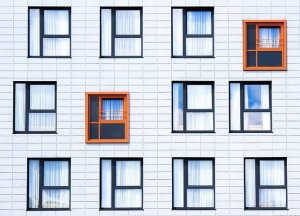Home renovations and modifications for ageing in place is big business in the United States. The latest issue of Designs 4 Living is focused on home modifications and the “forever” home. Four contributors provide their design ideas on home renovations American style.
Architect Aaron D Murphy asks, Do you have “Stay at Home” Insurance? He means “can you ensure you can stay longer in your own home?” Fearing loss of independence is no reason to do nothing until it’s too late. Murphy emphasises that universal design is good for everyone and not about “hospital parts”.

The title of Karen Koch’s article is “ADA is HOOEY”. Similarly to the Australian standard for public bathrooms, the ADA is not suited to residential settings. Occupational therapist Koch provides good tips, and uses photos to explain the importance of colour contrast for ageing eyes. However, these photos have lots of grab rails and “hospital parts”. A key tip is not to mount grab bars diagonally because that requires grip strength rather than arm and shoulder strength.
Robert May talks about indoor air quality and how he learned the value of clean air. The pandemic caused him to reconsider his scepticism and learn more about it. He says, “What I learned is that if you are not filtering your air then you yourself are the filter”. May goes on to talk about different products.
Jennifer Rossetti and Todd Brickhouse look at robots and the role they can play in our lives. Some already perform everyday tasks, but the interest is in companion robots. The focus of companion robots is on older people, although there is no reason they should be age specific. However, developers are looking for replacement caregivers in residential aged care.





 Todd Brickhouse’s Newsletter has some interesting
Todd Brickhouse’s Newsletter has some interesting  Of course, a custom design for your own home should work for you if not others.
Of course, a custom design for your own home should work for you if not others.  How do you know what older people want in their bathroom design? Simple. Ask them. And have lots of Post It Notes handy. Having a more flexible and safer bathroom at home is one of the keys to ageing in place. Knowing “what’s best” is not necessarily in the hands of design experts or health professionals. Co-designing bathrooms with older people is a better option.
How do you know what older people want in their bathroom design? Simple. Ask them. And have lots of Post It Notes handy. Having a more flexible and safer bathroom at home is one of the keys to ageing in place. Knowing “what’s best” is not necessarily in the hands of design experts or health professionals. Co-designing bathrooms with older people is a better option. Richard Voss reminds us that all of us are ageing all the time. Consequently, we need to think ahead in the design of our cities. He makes a good point that by the time the ink dries on new access codes they are already out of date. His
Richard Voss reminds us that all of us are ageing all the time. Consequently, we need to think ahead in the design of our cities. He makes a good point that by the time the ink dries on new access codes they are already out of date. His  It’s so much easier to measure outputs than outcomes. Social value is an outcome, but how do you measure it? Well the answer for most is, it’s too hard so don’t bother. The Fifth Estate features an article about why the building industry should measure the social value of good design.
It’s so much easier to measure outputs than outcomes. Social value is an outcome, but how do you measure it? Well the answer for most is, it’s too hard so don’t bother. The Fifth Estate features an article about why the building industry should measure the social value of good design. 